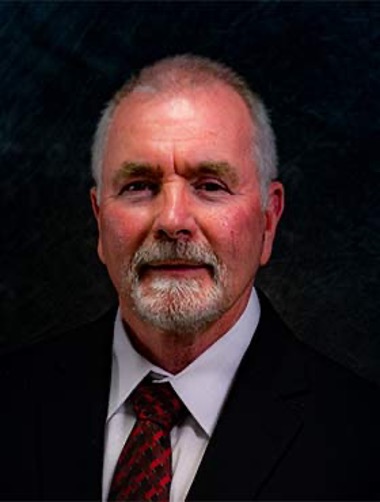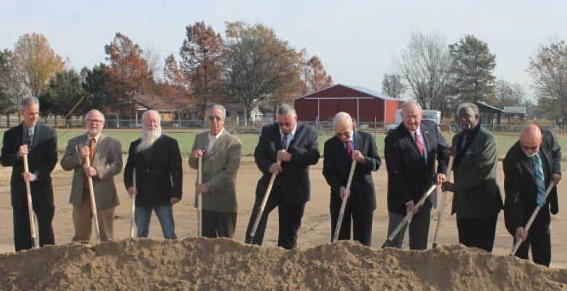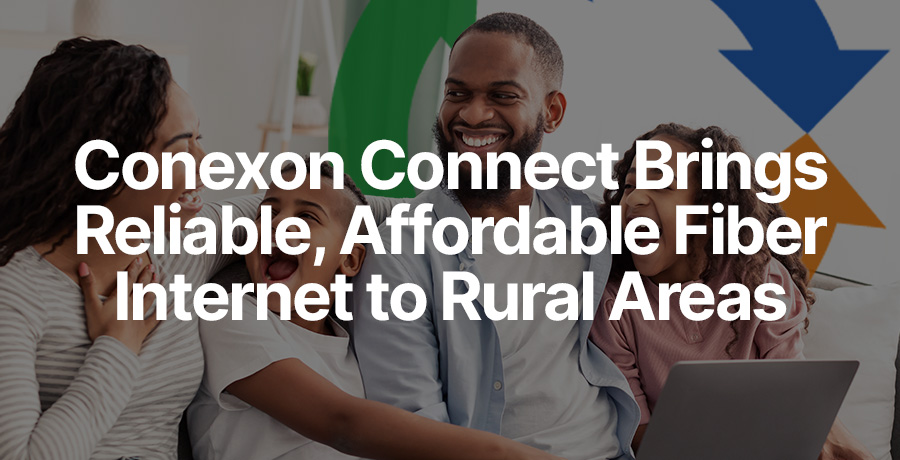Originally published: April, 2020
To read Pemiscot-Dunklin Electric Cooperative's latest story, click his link.
Pemiscot-Dunklin Electric Cooperative's Tim Davis and Jack Davis had an unusual reaction when they looked at the broadband feasibility study for their co-op - shock. "We were in disbelief for a couple of days, because we realized it would work," co-op chief technology officer, Jack Davis recalls. "Work" may be an understatement for the co-op's bold four-year, self-funded, fiber-to-the-home network deployment that will equip 3,300 or more rural Missourians with high-speed Internet, TV and phone service.
In the two years since co-op leadership made the decision to build out the 1,200-mile network.
From the beginning, word spread quickly - with no advertising - that the network was not just delivering Internet, but Gigabitspeed capabilities that rival any urban area in the country. "Our major problem, quite frankly," said Tim Davis, co-op general manager, "is getting service to people fast enough. The most frequent question we hear is "when?"
- Company Structure - Pemiscot-Dunklin Fiber, wholly-owned subsidiary
- Fiber Deployment Schedule - 4 years
- Speeds - 100 Mb (megabits per second) and 1 Gbps (gigabit per second)
"Randy knows electric co-ops and he knows broadband inside and out. Being able to pull from that experience is great. The way he laid out the plan made perfect sense, and with the research and thought behind it, it was a direction we felt we could go in."

A mission to make lives better
By 2017, Pemiscot-Dunklin leadership had for several years understood that providing some form of Internet, even basic service, was in its future. Like all co-ops, its heritage was founded on improving the lives of members in its communities.
At one time, the state's largest electric cooperative, Pemiscot-Dunklin has experienced declining populations, decimating storms and more adversity, but never wavered from its commitment to provide the vital services to keep its residential and farming communities viable.

The co-op's forward-thinking leadership realized in the early 2000s that Internet and online services represented the next opportunity to better serve members, so they conducted some basic Internet trials. When Jack Davis joined five years ago, he was tasked with finding a sustainable solution. He eventually came to the conclusion that wireless was the co-op's only option.
"I wasn't looking forward to it," he says now. "I had worked with it before and knew the drawbacks." Then Tim Davis attended a meeting for Missouri co-op CEOs and heard Conexon partner Jonathan Chambers speak about how other co-ops across the country were deploying fiber-to-the-home networks to serve their members.
That presentation led to further meetings with Chambers and Conexon partner Randy Klindt, the surprising feasibility study, and eventual realization that fiber deployment was a possibility. "We shared the feasibility plan with our Board," says Tim Davis, "and the rest is history. I have a lot of respect for Jonathan Chambers. He's an ethical guy and we put a lot of stock in what he said."
The Conexon Difference
Klindt's extensive experience with co-ops was invaluable from the beginning in addressing co-op challenges like cost constraints, low density and aging infrastructure. He also clearly understood the importance of staying true to co-op ideals.
"Randy knows electric co-ops and he knows broadband inside and out," says Tim Davis. "Being able to pull from that experience is great. The way he laid out the plan made perfect sense, and with the research and thought behind it, it was a direction we felt we could go in." From the earliest days of planning, Pemiscot-Dunklin has faced challenges that are unique even among co-ops.
While many co-ops were eligible for funding sources such as the Connect America Fund (CAF) II monies, Pemiscot-Dunklin didn't have viable eligible territories.
Consequently, the co-op is itself funding nearly 100 percent of the network. Additionally, a 2009 ice storm wiped out 80 percent of Pemiscot-Dunklin's system, which led to a decision to run the fiber run underground as opposed to on its existing pole infrastructure. The ability to construct all fiber underground was made possible by soil conditions and a local trusted contractor. Although more costly in the near-term, this approach will position the co-op to eventually deploy broadband outside its service area without the need for pole attachment agreements.
Understanding what Pemiscot-Dunklin faced, Conexon's network design team recommended a distributed TAP architecture network as opposed to a distributed split system. It has proven an ideal solution for the co-op's low density and cost constraints. "Randy covered everything we could have thought of in the plan," says Jack Davis. "I wasn't even aware of this type of architecture until we started working with Conexon. It's not your typical system, but it is more cost-effective and gives us a better chance of success."
The way forward
Given its limited resources, Pemiscot-Dunklin has relied heavily on the Conexon team for both expertise and manpower in areas even beyond the network design - vendor and equipment negotiations, pricing structure, onsite project management and much more. The partnership has enabled the co-op to improve the lives and livelihoods of area residents in a way other providers had not been willing to do.
"Some of our members had zero service," says Jack Davis. "A lot of commercial companies are looking for a quick payoff. This is a marathon for us, not a sprint. We're just looking to be able to pay for the network and offer good service at an affordable rate to our members. This feels like providing water to thirsty, or dehydrated people. They're blown away by how good it is."
For co-ops in similar situations, Tim Davis advises taking the step of a feasibility study and tapping into experts. "Every co-op has to be evaluated individually," he says. "Once you get a study done, then you can see what's really possible. There were a lot of things in the study we hadn't even considered. Everything was thought of. Being able to draw on Conexon's expertise has been invaluable."
